🌟🎨 World Tourist Spot Series: Iceland Edition 🎨🌟
🎨✨ Explore the magical landscapes and unique architecture of Iceland by adding vibrant colors! ❄️🌋 Feel like you’re journeying through the Nordic wilderness as you create your one-of-a-kind masterpiece 🌈✨
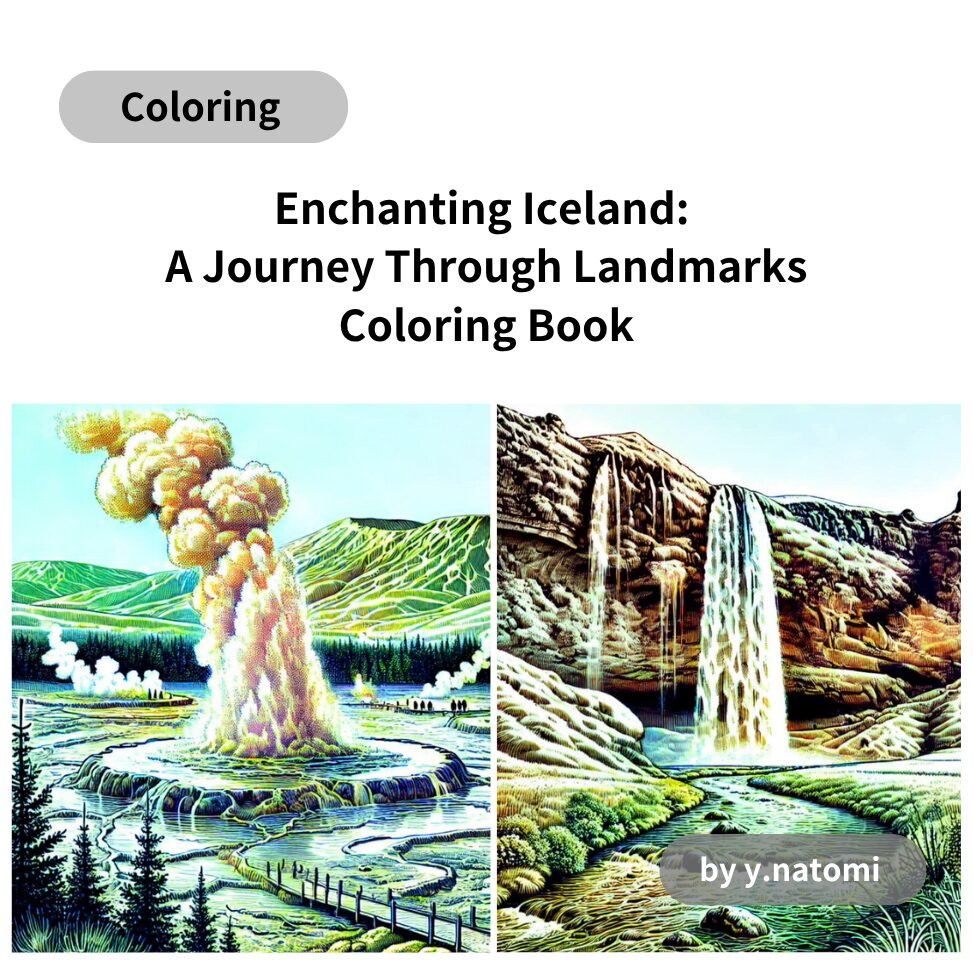
The coloring book consists of 98 pages (21 cm × 21 cm) in an open-flat format.
It features original coloring pages of 24 tourist spot themes, arranged in the following structure.
・Even-numbered pages feature bold-lined coloring bases.
・Odd-numbered pages feature light-lined coloring bases.
※ the back side of each page is left blank without any printing.
View the Amazon Book Page Here
Coloring Theme Table of Contents
| 1. Hallgrimskirkja in Reykjavik | 11. Seljalandsfoss Waterfall | 21. Reykjanes Peninsula |
| 2. Geysir Hot Springs | 12. Snaefellsnes Peninsula | 22. Fjadrargljufur Canyon |
| 3. Gullfoss Waterfall | 13. Akureyri City | 23. Krysuvik Geothermal Area |
| 4. Thingvellir National Park | 14. Blue Lagoon | 24. Lake Alftavatn |
| 5. Skaftafell National Park | 15. Geothermal Area of Landmannalaugar | |
| 6. Jokulsarlon Glacier Lagoon | 16. Lake Myvatn | |
| 7. Strokkur Geyser | 17. Cape Hofdi | |
| 8. Dettifoss Waterfall | 18.Fjallsarlon Glacier Lagoon | |
| 9. Black Sand Beach in Vik | 19. Vatnajokull Glacier | |
| 10. Basalt Columns at Reynisfjara | 20. Hvalfjordur |
Click here to view the "Iceland Travel Guide" and "Highlights of Tourist Attractions."
If you want to see other coloring themes, go to ⇒ Theme Search Map.
Completed Coloring Sample

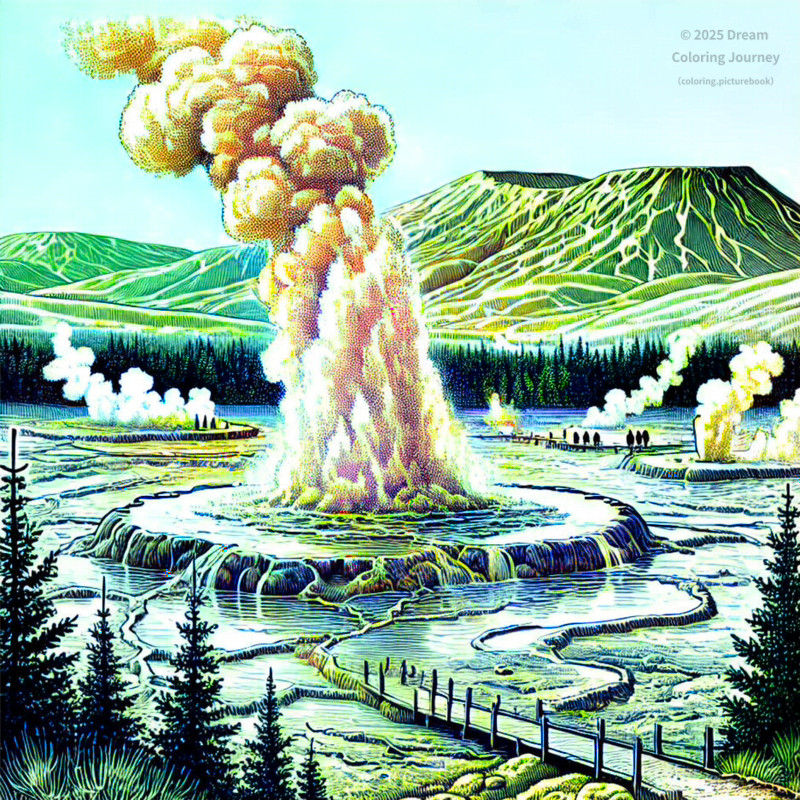
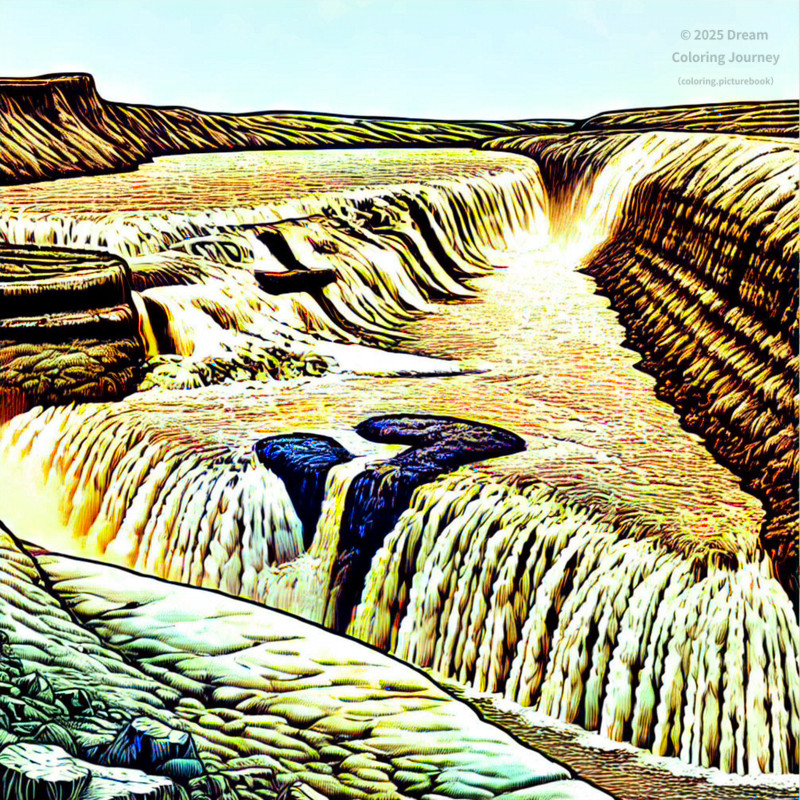
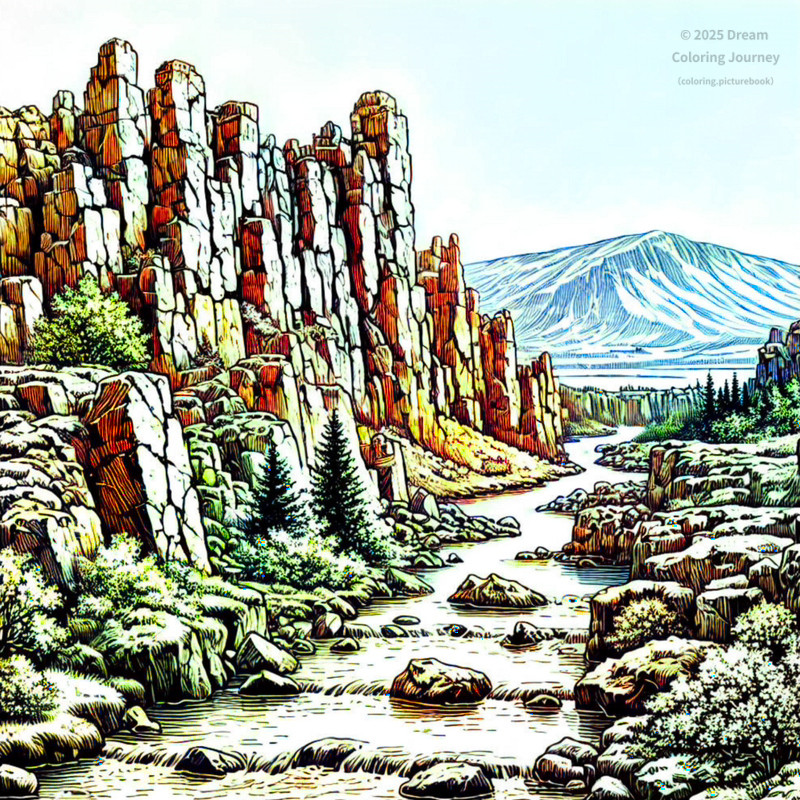
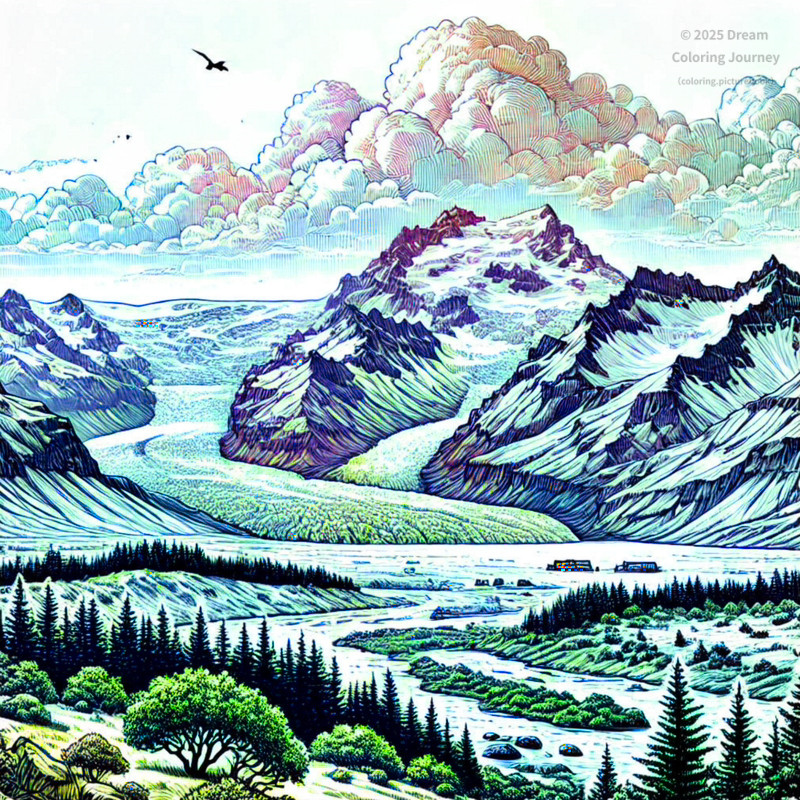
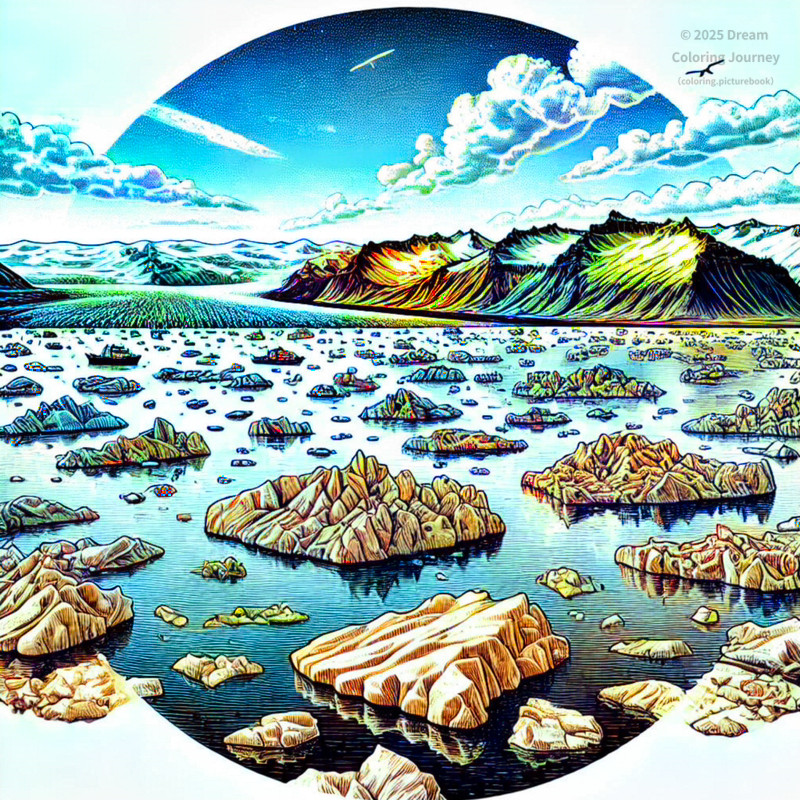
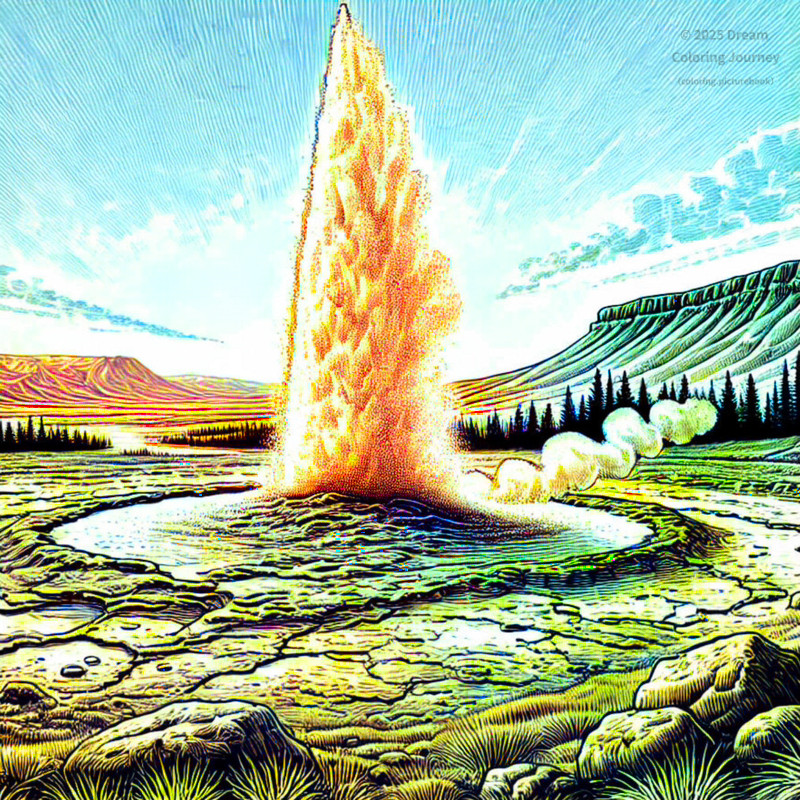
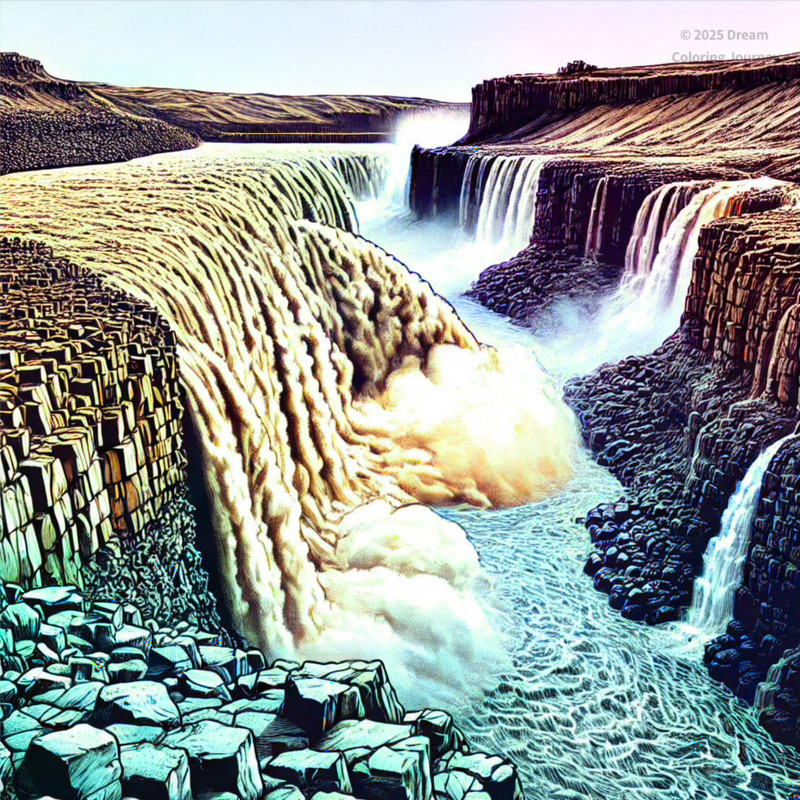
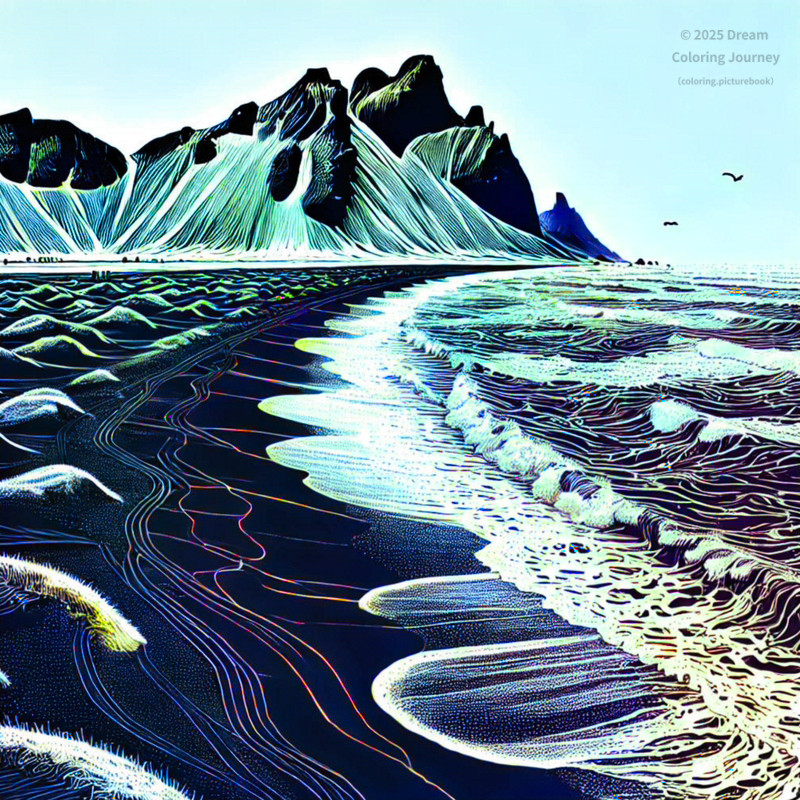
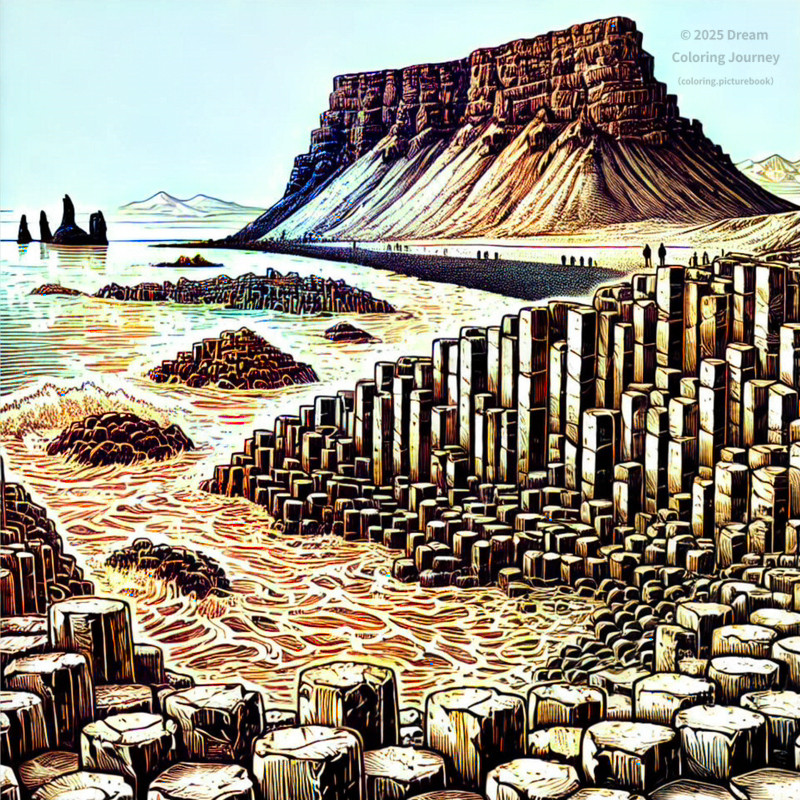

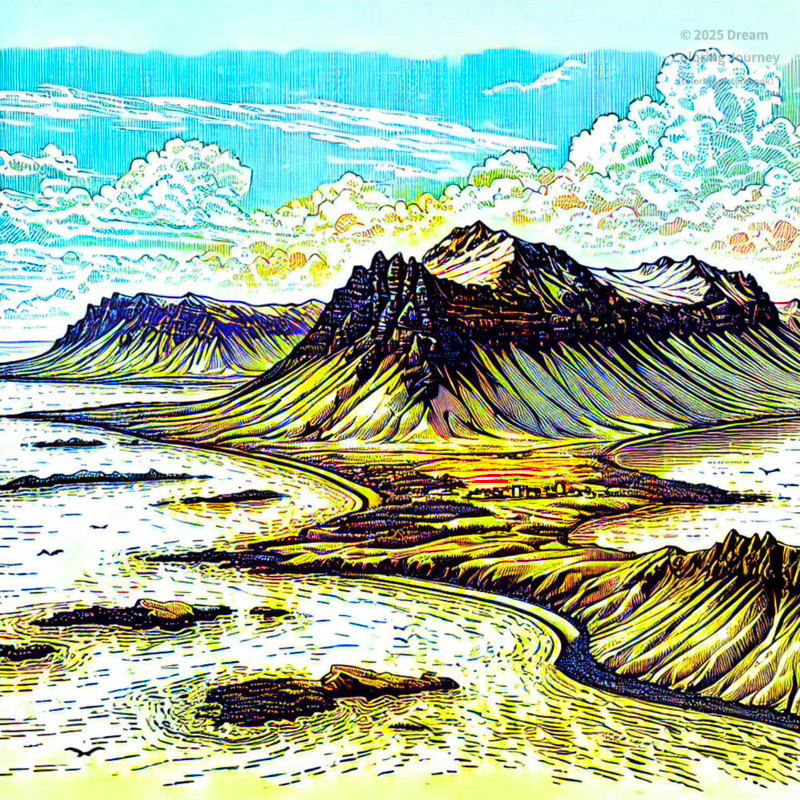
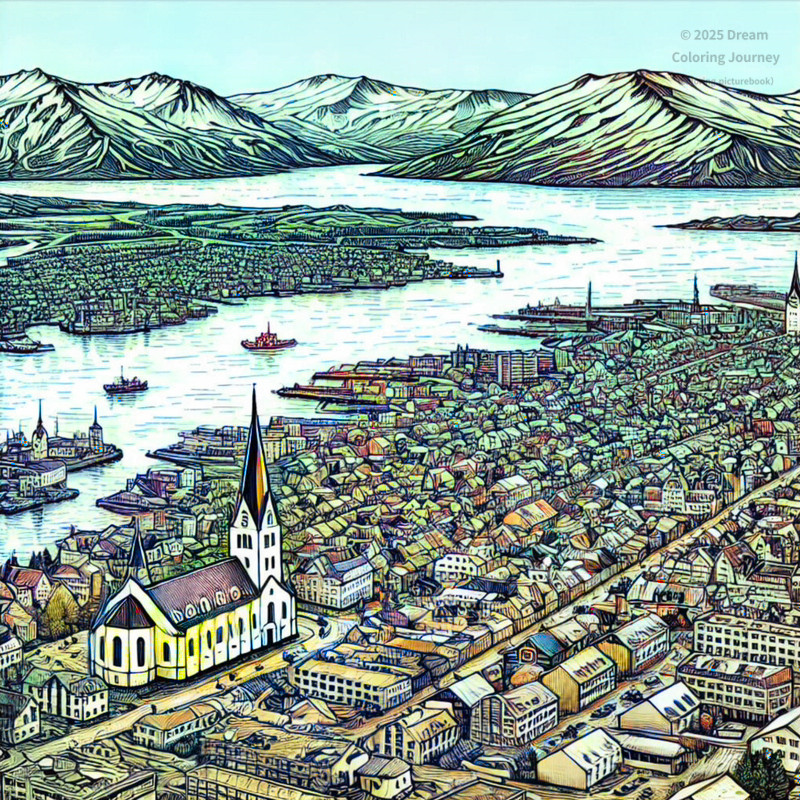
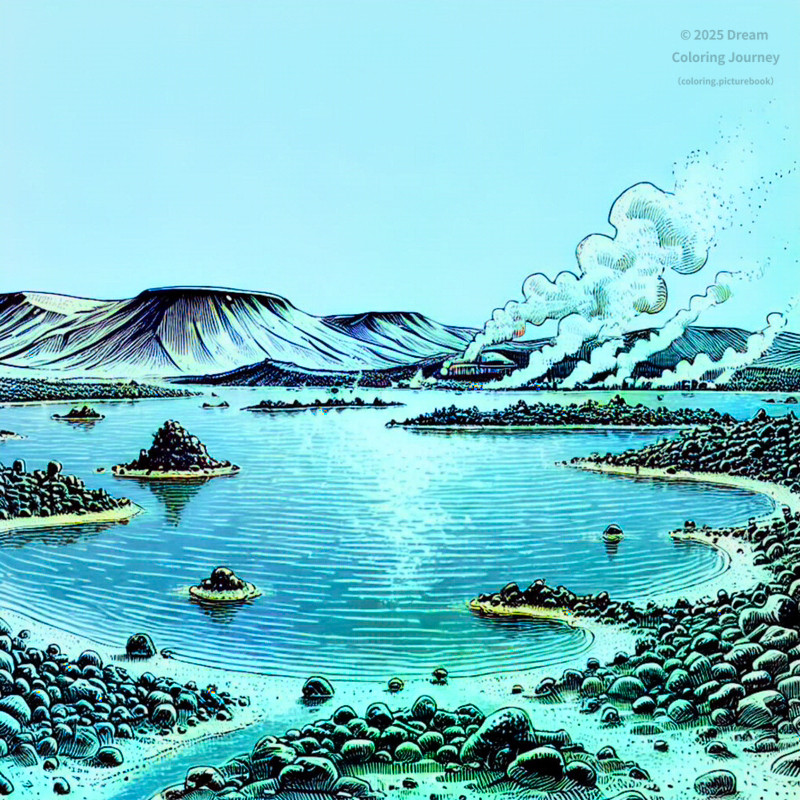
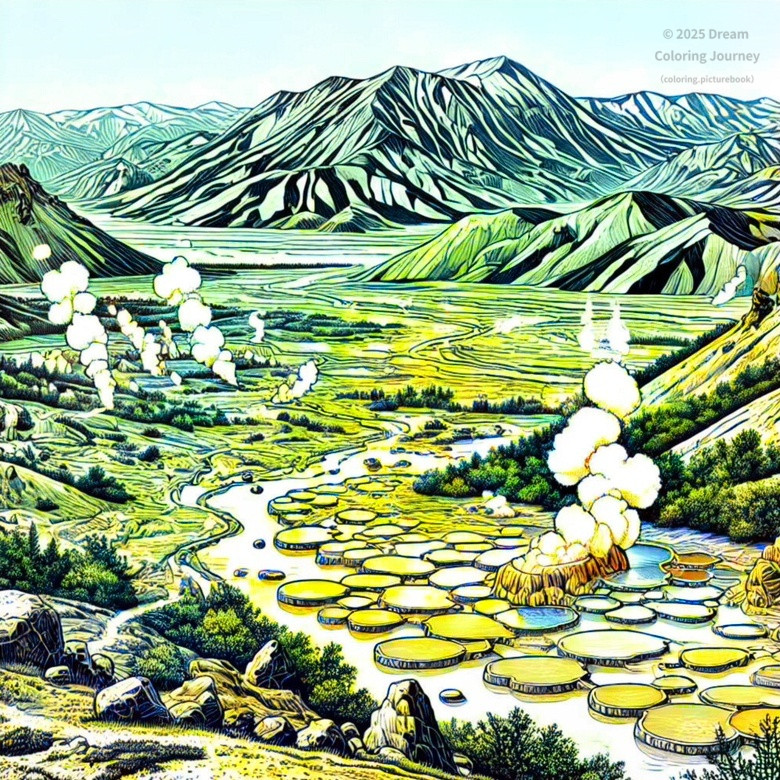
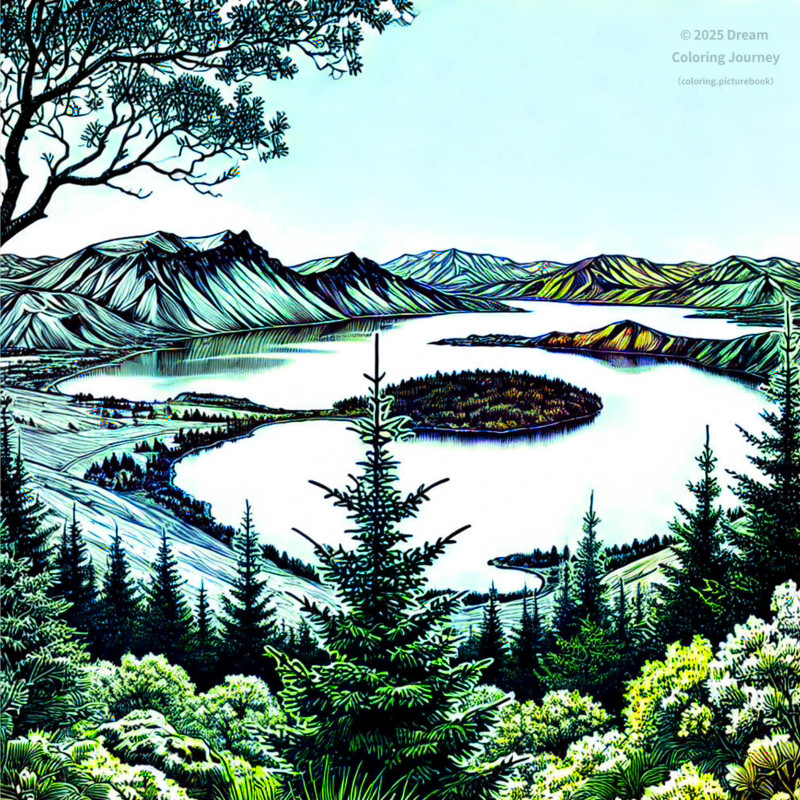
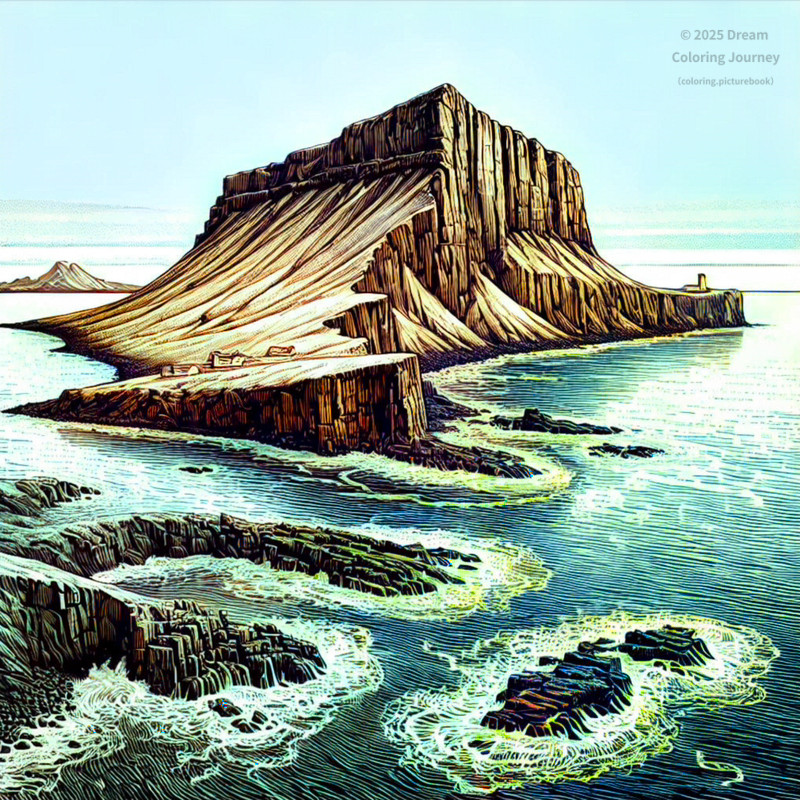
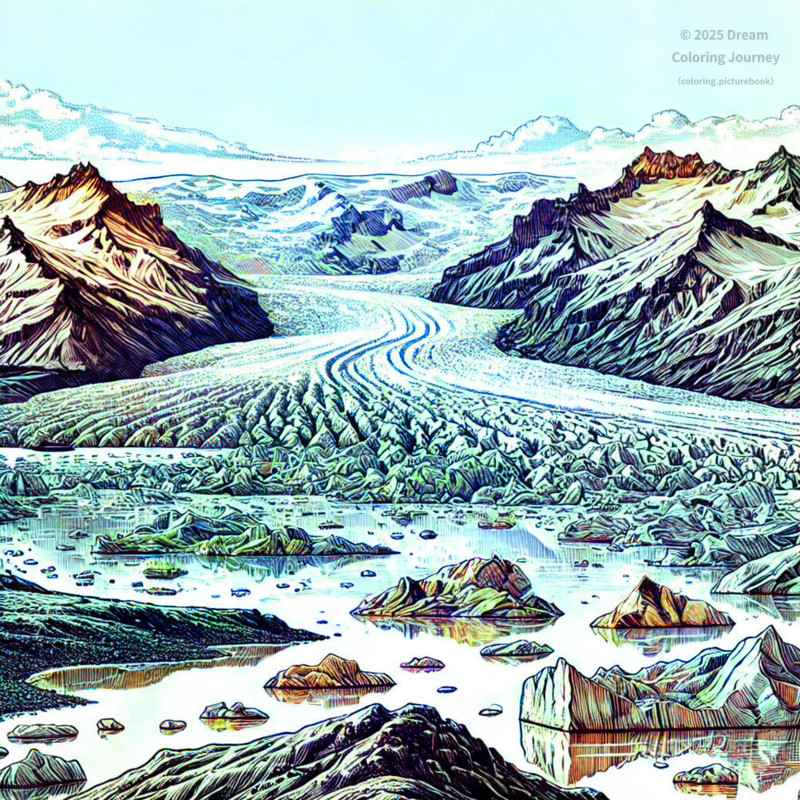
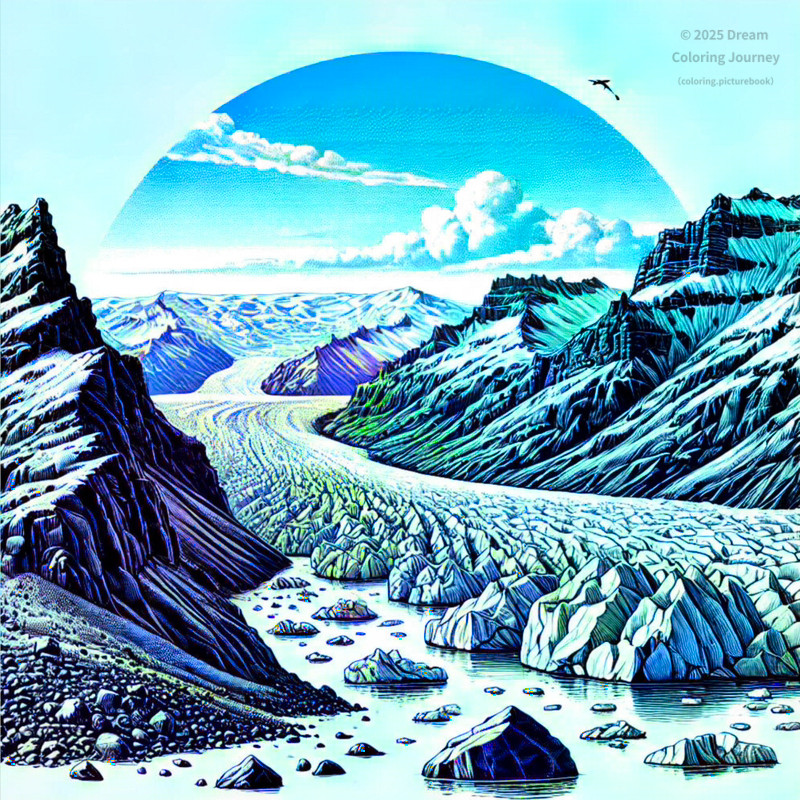
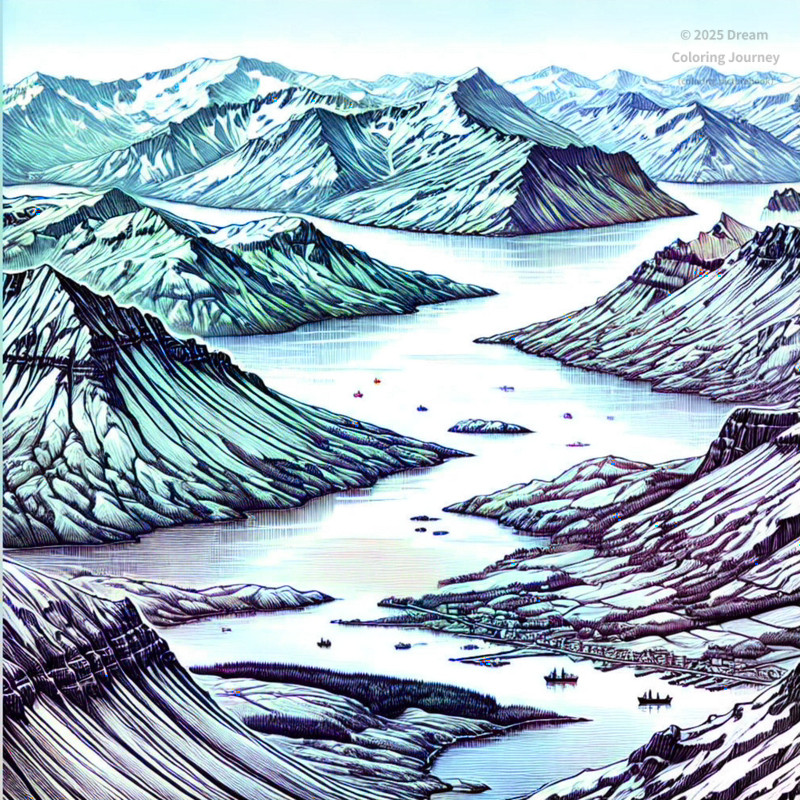
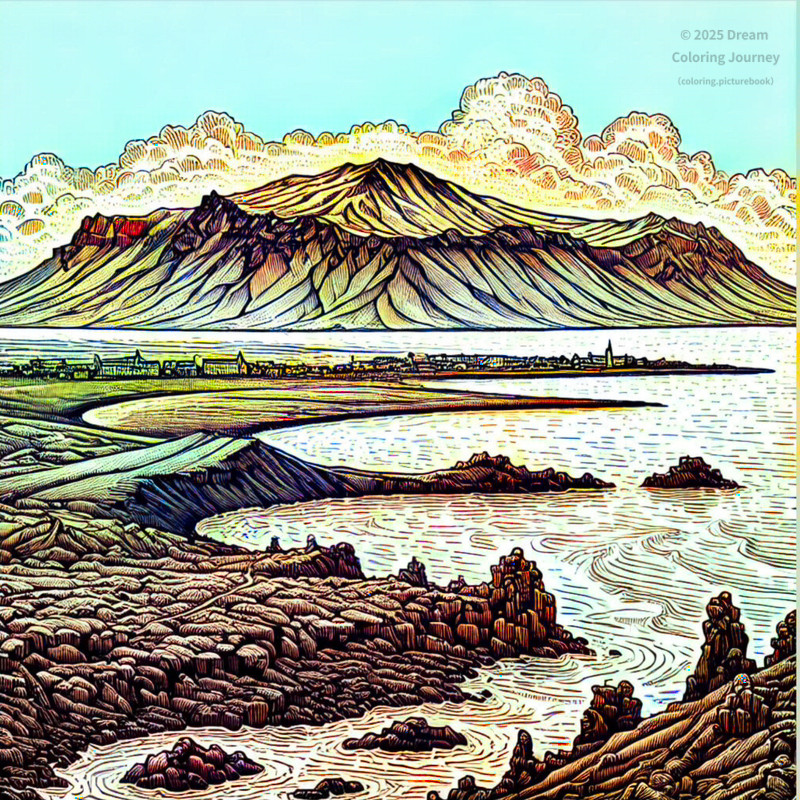

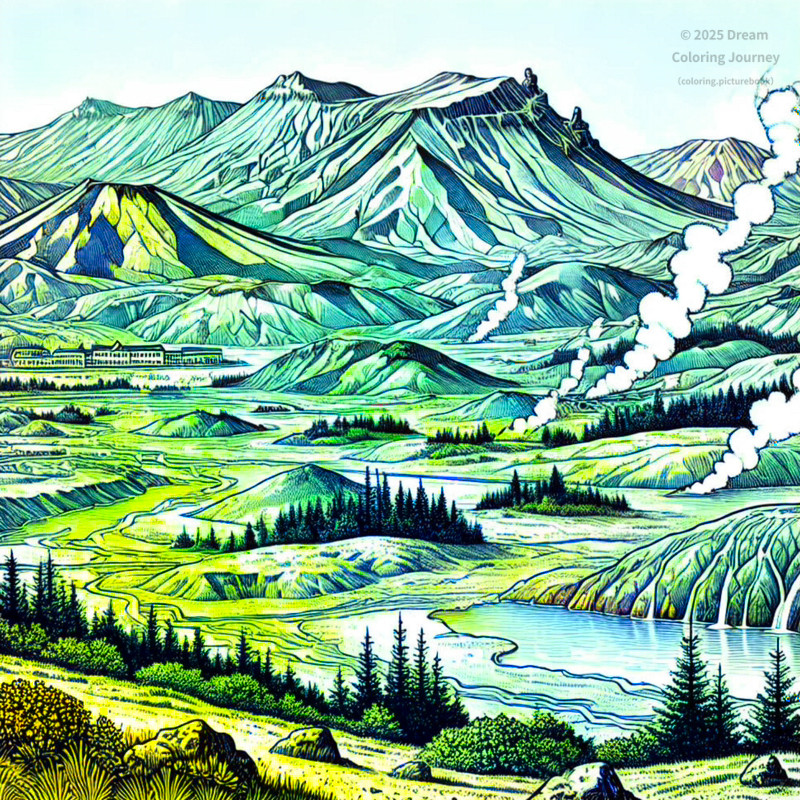
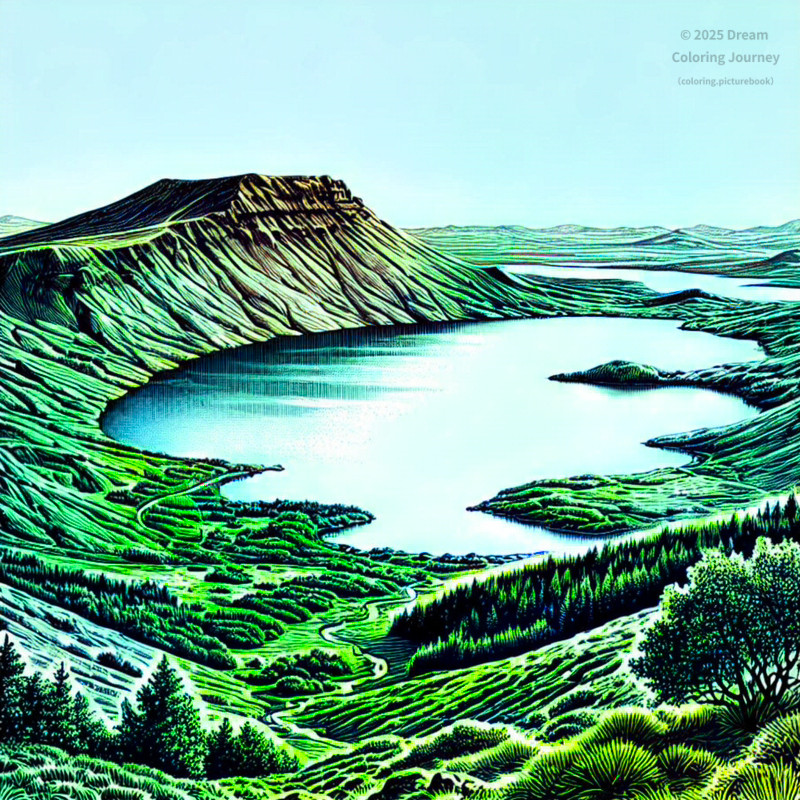
If you want to see other coloring themes, go to ⇒ Theme Search Map.
How to Purchase a Coloring Book
From the link below, you will be redirected to the Amazon Books site where you can purchase the corresponding paperback.
The book is printed in high-quality black-and-white for coloring and is available in English only.
Please refer to the "Coloring Page Sample" on this blog for inspiration, and enjoy coloring freely.

The coloring book consists of 98 pages (21 cm × 21 cm) in an open-flat format.
It features original coloring pages of 24 tourist spot themes, arranged in the following structure.
・Even-numbered pages feature bold-lined coloring bases.
・Odd-numbered pages feature light-lined coloring bases.
※ the back side of each page is left blank without any printing.
View the Amazon Book Page Here
✈️ Iceland Travel Guide【Perfect for Beginners】
🗺 Country Overview
Iceland is a Nordic island nation known for its dramatic landscapes—volcanoes, glaciers, hot springs, and the northern lights. With a population of just 370,000, it’s safe, well-organized, and ideal even for first-time solo travelers. The capital, Reykjavík, serves as the main hub for both arrivals and excursions.
🌤 Climate & Best Time to Visit
Iceland has a cool oceanic climate, and each season offers unique experiences:
- Spring (April–May): Melting snow and lengthening daylight hours
- Summer (June–August): Midnight sun, pleasant temperatures, ideal for hiking and road trips
- Autumn (September–October): Fewer tourists and the beginning of the northern lights season
- Winter (November–March): Cold and snowy, perfect for seeing the aurora and visiting ice caves
🟢 Best time to visit: June to August for stable weather and outdoor activities; September to March for northern lights.
🚍 Transportation & Access
- Airport: Keflavík International Airport (KEF) is the main gateway, about 45 minutes by bus to Reykjavík
- City Transport: Reykjavík has a bus network; no subway or train services
- Beyond the City: Renting a car is common for exploring the countryside. The Ring Road encircles the island
- Tours: Popular options include the Golden Circle, glacier hikes, and northern lights excursions
💰 Currency & Costs
- Currency: Icelandic Króna (ISK)
- Prices: One of the most expensive destinations in Europe—especially dining and accommodation. Self-catering and grocery shopping help reduce costs
- Tipping: Not required but appreciated in restaurants and guided tours
🔐 Safety & Health
- Safety: Iceland is one of the safest countries in the world—even for solo female travelers
- Cautions: Nature can be unpredictable. Be aware of sudden weather changes and volcanic/geothermal areas
- Healthcare: Excellent quality with English-speaking staff. Travel insurance is strongly recommended
🗣 Language & Communication
- Official Language: Icelandic
- English Proficiency: Very high—most locals speak English, and signs are often bilingual (Icelandic and English)
📱 Wi-Fi & Connectivity
- Free Wi-Fi is available in most hotels, cafes, and public places
- SIM cards and eSIMs are available at the airport or in town, with reliable coverage even in rural areas
🌟Highlights of 24 Tourist Attractions
- Hallgrímskirkja (Reykjavík)
The 74 m futuristic Lutheran church was designed by Gudjon Samuelsson (1887–1950). It dominates Reykjavík’s skyline, and the observation deck offers panoramic views of the city and surrounding fjords. Open year-round and easily accessible from downtown. - Geysir Hot Springs (Haukadalur Valley)
Records of the area date back to the 13th century, with the Great Geysir being one of the earliest known geysers in Europe. Today, Strokkur remains active, erupting every 5–10 minutes. Spring to autumn offers the best conditions for viewing. - Gullfoss Waterfall (South Iceland)
While the flow is substantial year-round, the meltwater from Langjokull glacier contributes to a powerful display, especially in summer. This two-tiered waterfall is a highlight of the Golden Circle, just 10 minutes from Geysir. - Thingvellir National Park (Southwest Iceland)
This UNESCO World Heritage site marks the boundary between the Eurasian and North American tectonic plates and was the site of Iceland’s ancient parliament, the Althingi, from 930 AD. Features include dramatic fissures and clear diving spots like Silfra. - Skaftafell National Park (Southeast Iceland)
Part of Vatnajokull National Park, it offers glacier hikes and ice cave tours. Glacier hiking is generally best from mid-May to September, while ice caves are typically accessible in winter. - Jokulsarlon Glacier Lagoon (Southeast Iceland)
Icebergs calved from the Breidamerkurjokull glacier drift in this stunning lagoon before flowing into the sea. The serene landscape is beautiful year-round, with different lighting and ice formations in each season. - Strokkur Geyser (Haukadalur Valley)
This reliable geyser erupts impressively every few minutes, reaching heights of up to 30 meters. The surrounding area features geothermal attractions like mud pools and fumaroles. - Dettifoss Waterfall (North Iceland)
Dettifoss is one of Europe’s most powerful waterfalls, with a tremendous volume of water plunging 44 meters over a 100-meter-wide cliff. Accessible via hiking or gravel roads. - Black Sand Beach in Vík (South Coast)
The black sand beach at Vik (often referred to as Reynisfjara) features volcanic black sand, powerful Atlantic waves, and striking basalt columns and sea stacks. - Basalt Columns at Reynisfjara (Vík)
These impressive hexagonal basalt columns were formed by the cooling and contraction of lava flows millions of years ago. A natural wonder against the black-sand beach backdrop. - Seljalandsfoss Waterfall (South Coast)
Seljalandsfoss is a picturesque 60-meter waterfall famous for the walking path that allows visitors to experience the cascade from behind. Best visited in summer when trails are ice-free. - Snaefellsnes Peninsula (West Iceland)
The Snaefellsnes Peninsula boasts diverse landscapes including volcanoes, lava fields, glaciers (like Snaefellsjokull), and charming fishing villages. Often called "Miniature Iceland." - Akureyri City (North Iceland)
Akureyri offers a charming old town, botanical gardens, and cultural events year-round, earning it the nickname “Capital of the North.” Easily accessible by car or domestic flight. - Blue Lagoon (Reykjanes Peninsula)
The Blue Lagoon’s distinctive milky-blue water is heated by a nearby geothermal power plant and enriched with minerals like silica. Advance booking is recommended. - Geothermal Area of Landmannalaugar (Highlands)
Landmannalaugar is accessible by 4x4 vehicles from late June to mid-September due to rugged F-road conditions. It’s famous for colorful rhyolite mountains, hot springs, and hiking trails. - Lake Myvatn (Northeast Iceland)
Lake Myvatn is rich in geological wonders like Dimmuborgir lava fields, pseudocraters, and geothermal springs. The area is especially beautiful during summer. - Cape Hofdi (Lake Myvatn)
Cape Hofdi is located on Lake Myvatn’s shore, known for its lava formations and tranquil views. It is sometimes confused with cliffs in the Westfjords. - Fjallsarlon Glacier Lagoon (Southeast Iceland)
Fjallsarlon is another glacier lagoon near Jokulsarlon, featuring floating icebergs from the Fjallsjokull glacier. Less crowded but equally scenic. - Vatnajokull Glacier (Southeast Iceland)
Vatnajokull is Europe’s largest glacier by volume, covering about 8% of Iceland. It offers year-round hiking and guided ice cave tours. - Hvalfjordur (West Iceland)
Hvalfjordur is a scenic fjord near Reykjavík, known for hiking to Glymur Waterfall and WWII remnants. Easily reached via the Hvalfjardargong tunnel. - Reykjanes Peninsula (Southwest Iceland)
The Reykjanes Peninsula features lava fields, hot springs like Krysuvik, the Bridge Between Continents, and dramatic coastline views. A full-day trip from Reykjavík. - Fjadrargljufur Canyon (South Coast)
Fjadrargljufur is a winding canyon carved by glacial meltwater, not a lava cave. It’s up to 100 meters deep and about 2 km long. Popular for hiking and photography. - Krysuvik Geothermal Area (Reykjanes Peninsula)
Krysuvik is a geothermal area, not a canyon. It features steaming vents, bubbling mud pools, and sulfurous hillsides. Located near the coastal town of Grindavik. - Lake Alftavatn (Highlands)
Lake Alftavatn is a glacial lake along the popular Laugavegur hiking trail, surrounded by colorful rhyolite peaks. It’s a common stop for overnight hikers.